Technology
Xbox games will be purchasable from the Android app soon
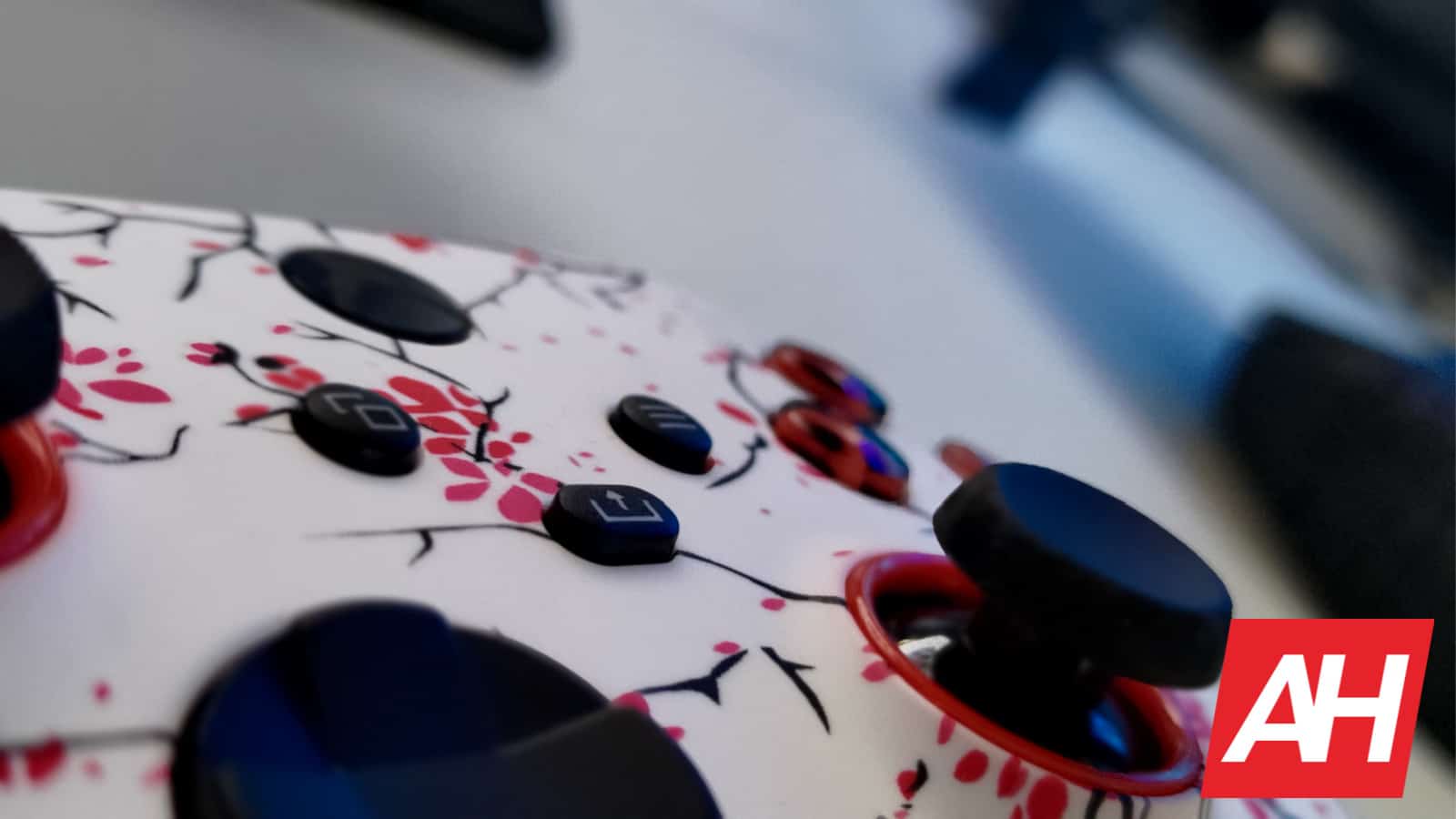
Xbox games are coming to Android in a way many have probably hoped for for a while. Soon, you’ll be able to buy Xbox games directly from the Android Xbox app. Microsoft’s President of Xbox Sarah Bond confirmed the upcoming change on X on October 10, noting that Xbox’s mission is to “allow more players to play on more devices.” This has been the case for several years now and it’s a statement that echoes the words of Microsoft’s Head of Gaming, Phil Spencer. Who has repeatedly said that the vision of Xbox is to bring games to as many people as possible on as many devices as possible.
It’s the whole reason Microsoft began developing (and finally launching) the cloud gaming feature for Xbox Game Pass Ultimate. So players would have a way to play their favorite games no matter what device they’re using. That mission has never really changed. But why did it take so long for Xbox to allow game purchases from the app?
It might have something to do with how Google runs the Play Store on Android. Whenever a purchase is made through an app, Google takes a cut of that purchase revenue. However, that will be changing following Epic’s big win against Google in court. Last December, Judge James Donato ruled Google’s Play Store was a monopoly.
And just this week, Donato made a final ruling that Google is required to allow third-party app stores within the Play Store. Part of that ruling also stated that Google can no longer force developers to use Google Play billing. That’s where this change from Microsoft and the Xbox team comes in.
Android users can buy Xbox games from the app starting in November
Now that Microsoft won’t be required to use Google Play billing, it will presumably sell games directly to users through its own billing system. The feature will be launching on the Xbox app in November. However, Bond didn’t say when exactly the feature would appear.
We’re nearly halfway through October though, so it most likely won’t be too long.
Xbox Game Pass Ultimate will no doubt be required
To stream games through the Game Pass app, you need to have an Xbox Game Pass Ultimate membership. So it’s reasonable to assume that you will need to be subscribed to Ultimate for streaming games from the Xbox app after purchases as well.
This hasn’t been confirmed but it doesn’t make sense to offer the streaming feature without the membership requirement. Although, maybe it will allow the capability given that people will be buying these games. Whereas with Game Pass, you’re paying for the membership subscription and not actually purchasing the games outright.
Technology
Apple iPhone 16 Pro vs. iPhone 14 Pro: Upgrade time?
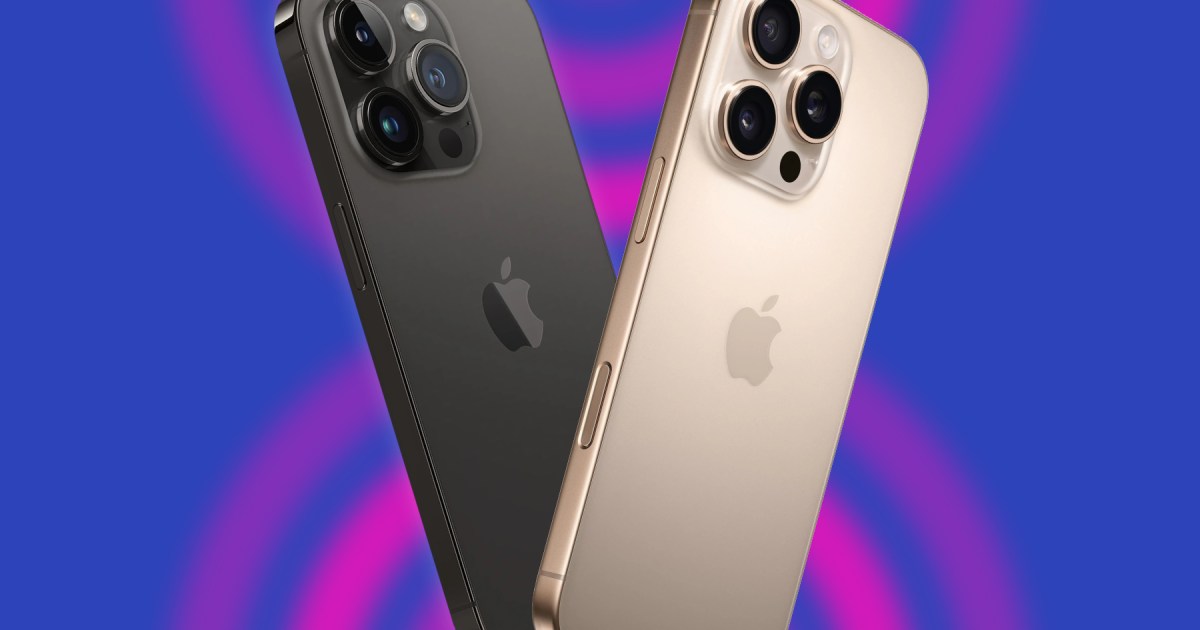
Apple’s smartphones are finally entering a new era — a phase where the software is driving as much innovation as the hardware. In fact, if one looks at the magnitude of changes that iOS 18 brings to the table with Apple Intelligence at the helm, the hardware enhancements pale in comparison. The Apple iPhone 16 Pro is at the forefront of that movement, thanks largely to the inclusion of Apple’s new AI. But is there any merit in holding on to an older iPhone?
The iPhone 14 Pro is the focus for most buyers’ “keep or jump” dilemma. A remnant of the Lightning port era, the iPhone 14 Pro continues to prove its mettle as a reliable warhorse with a terrific camera. But the kind of comprehensive changes across screen, silicon, charging, and software parameters introduced by the iPhone 16 Pro also make it a candidate for an upgrade.
If you’ve been holding on tight to your iPhone 14 and aren’t sure if there are enough meaningful advancements with the iPhone 16 Pro to warrant a spending spree, here’s a detailed breakdown to guide your upgrade decision. And if you’re interested in what we think about the rest of Apple’s line, we have reviews of the iPhone 16 and iPhone 16 Pro Max, too.
iPhone 16 Pro vs. iPhone 14 Pro: specs
| Specs | iPhone 16 Pro | iPhone 14 Pro |
|---|---|---|
| Size | 149.6 x 71.5 x 8.25 mm (5.89 x 2.81 x 0.32 inches) | 147.5 x 71.5 x 7.85 mm (5.81 x 2.81 x 0.31 inches) |
| Weight | 199 g (7.03 oz) | 206 g (7.27 oz) |
| Screen | 6.3-inch Super Retina XDR OLED
1206 x 2622 pixels ProMotion with 120Hz dynamic refresh rate Dolby Vision, 2,000 nits brightness |
6.1-inch Super Retina XDR OLED
1179 x 2556 pixels ProMotion with 120Hz dynamic refresh rate Dolby Vision, 2,000 nits brightness |
| Operating system | iOS 18 | iOS 18 |
| Build | Titanium with textured matte glass back | Stainless steel with textured matte glass back |
| Buttons | Action Button Camera Control |
Ring/Silent switch |
| Storage | 128GB, 256GB, 512GB, 1TB | 128GB, 256GB, 512GB, 1TB |
| Processor | Apple A18 Pro
Six-core CPU Six-core GPU 16-core NPU |
Apple A16 Bionic
Six-core CPU Five-core GPU 16-core NPU |
| Camera | Rear:
48-megapixel primary, f/1.8, OIS 48MP ultrawide, f/2.2, 120° FOV 12MP telephoto, f/2.8, 5x optical zoom Front: 12MP, f/1.9 aperture |
Rear:
48MP primary, f/1.78, OIS 48MP ultrawide, f/2.2, 120° FOV 12MP telephoto, f/1.78, 3x optical zoom Front: 12MP, f/1.9 aperture |
| Video | Rear:
4K, up to 120 fps Front: 4K, up to 60 fps |
Rear:
4K, up to 60 fps Front: 4K, up to 60 fps |
| Connectivity | Wi-Fi 7, dual-band
Bluetooth 5.3 |
Wi-Fi 6, dual-band
Bluetooth 5.3 |
| Ports | USB-C Gen 3.2
DisplayPort |
Lightning USB 2.0 |
| Water resistance | IP68 (maximum depth of 6m up to 30 minutes) | IP68 (maximum depth of 6m up to 30 minutes) |
| Battery & charging | Up to 23 hours video playback
45W fast charging 25W wireless charging via MagSafe 15W Qi2 wireless charging |
Up to 27 hours video playback
25W fast charging 15W wireless charging via MagSafe 7.5W Qi wireless charging |
| Colors | Black Titanium, White Titanium, Natural Titanium, Desert Titanium | Space Black, Silver, Gold, Deep Purple |
| Price | Starts at $999 | Starts at $999 |
iPhone 16 Pro vs. iPhone 14 Pro: design and display

There isn’t much to discuss here about any design overhaul, as the fundamental aesthetic language is identical. However, there are a few refinements that can only be felt when the two devices are held in hand. The iPhone 16 Pro is slightly taller and thicker than the iPhone 14 Pro, and a touch lighter too. That weight disparity predominantly has to do with the build’s material of choice. The latest flagship from Apple relies on titanium, which is lighter, more resilient, and better equipped to handle heat dissipation. The iPhone 14 Pro, on the other hand, has a stainless steel frame married to a matte glass shell.
Another crucial difference concerns the edges. The iPhone 14 Pro’s sides were quite sharp and the phone dug into the palm in quite an uncomfortable fashion. The iPhone 16 Pro takes a more rounded approach to the edges, making it cozier to hold, if not a day-and-night difference.
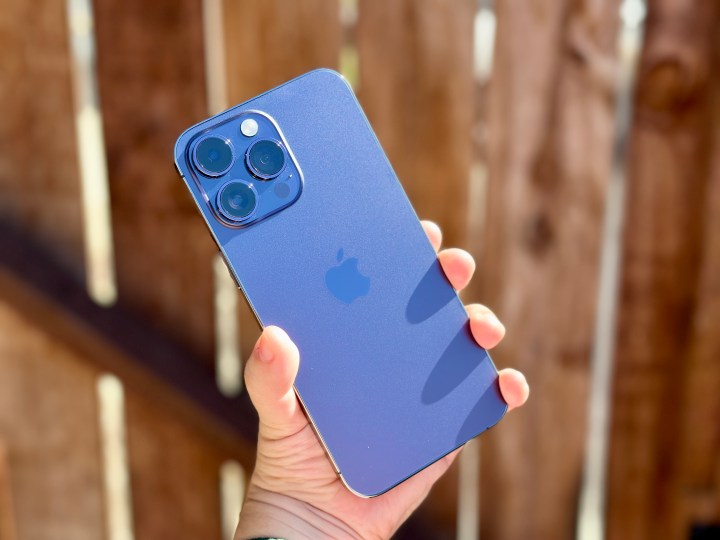
Apple has also slimmed down the bezels to accommodate a larger display on the phone. With the iPhone 16 Pro, you also get USB-C (Gen 3 port with Display Port support) with 10Gbps output as it ditches the Lightning Port (USB Gen 2) on the iPhone 14 Pro. In a nutshell, you get faster data transfer bandwidth and liberation from the dongle life.
The ingress protection is identical across both phones at an IP68 level, but the color options vary. The iPhone 16 Pro serves up a new Desert Titanium look that’s somewhat inspired by the gold trim on the iPhone 16 Pro, but the latter’s signature Deep Purple is gone. The rest of Apple’s latest options include silver, white, and black.
Another core difference, as mentioned above, is the display. The iPhone 16 Pro has a 6.3-inch panel, up from the 6.1-inch OLED screen on the iPhone 14 Pro. The rest of the attributes, such as pixel density, peak refresh rate, and brightness output remain identical. Apple says the latest iteration of Ceramic Shield on the iPhone 16 Pro is twice as strong, while the OLED panel’s brightness can drop to as low as 1 nit, which is technically great news from the lens of power efficiency.

Another crucial change is the introduction of two extra buttons on the iPhone 16 Pro that replace the mute switch on the iPhone 14 Pro. The Action button has already become a favorite of folks for folks looking to execute tasks or even shortcuts with the press of a button.
We also get the Camera Control, a physical button with a capacitive side to it. It’s a camera shutter in spirit, but can do a lot more. Using slide gestures, it can also handle adjustments like ISO or zoom level, among other camera controls.
iPhone 16 Pro vs. iPhone 14 Pro: camera
For users deep into video capture and engaged in professional workflows, the latest from Apple offers plenty. Both phones rely on a mostly identical 48-megapixel main camera and a 12MP zoom camera, but the iPhone 16 Pro takes things up a notch by upgrading the 12MP ultrawide lens to a 48MP sensor.

Another crucial upgrade is the inherent zoom architecture. The iPhone 14 Pro has a 3x optical range using a lens tunnel system for zooming. The iPhone 16 Pro reaches a 5x optical zoom range, thanks to the tetra prism lens architecture that was first seen on the iPhone 15 Pro Max. It also jumps to the Smart HDR 5 pipeline for more effective color contrast output.
On the imaging side, the iPhone 16 Pro enables full 48MP macro capture and can also take Spatial Pictures suited for viewing on the Apple Vision Pro headset. There are also new photographic styles on the table, alongside a new pad adjustment system to achieve the exact strength of a specific style. While that sounds appealing, it’s really the video capture side of things where the iPhone 16 Pro races into an altogether different league.
To start, the rear camera can now shoot 4K Dolby Vision videos at both 100 frames per second (fps) and 120 fps, and the results look incredible. Of course, for users who like more control over their video edits, the phone also opens the doors for log capture (with support for the Academy Color Encoding System), something the iPhone 14 Pro misses out on.

Apple has also armed the iPhone 16 Pro with four studio-quality mics, and they play a supremely important role. Apple claims they deliver more true-to-life sounds. The trick in question is audio mixing. Essentially, when you shoot a video, you can pick between directional audio presets like in-frame, studio, and cinematic. These presets let users focus on a certain audio sources in their video to highlight and emphasize specific inputs.
iPhone 16 Pro vs. iPhone 14 Pro: performance and software
The biggest shift between the iPhone 14 Pro and its 16-series counterpart is the processor, which not only stands out based on hardware merits, but also opens the doors for an entirely new software experience courtesy of Apple Intelligence.

Now, depending on how excited you are about AI, you may or may not make an upgrade choice, but here’s the lowdown. The A16 Bionic in the iPhone 14 Pro is based on TSMC’s 4nm process, and it serves a six-core CPU and a five-core graphics engine. The iPhone 16 Pro’s A18 Pro, built atop the newer 3nm node, packs six graphics cores.
The lift in processing firepower stands at 30%, while the GPU performance is improved by 40% this time around. Even compared to the mighty A17 Pro in the iPhone 15 Pro, Apple is touting a two-fold gain in hardware-accelerated ray tracing performance in games. It’s just that there are only a handful of games out there that can push ray tracing on the new and improved flagship iPhone.
Now, both iPhones have already received the iOS 18 update, but the experience is going to be quite different. The biggest upgrade is Siri interactions, which are not only a lot more natural, but also dig deeper into apps for seamless integration to get work done. It can even handle multimedia content editing using voice commands.

That means not only can Siri more efficiently perform tasks across different apps (both in-house and third-party), but it can also look into the details stored by these apps and accordingly respond to user queries. Additionally, when it can’t handle certain queries, they will be offloaded to OpenAI’s ChatGPT.
There’s a lot to unpack. The Notes app gets Writing Tools that let you handle rewrites, corrections, formatting, and summarization with a single click. AI smarts have also been extended to the Mail app, where they enable email summarization as well as smart reply suggestions.
App notifications are also intelligently brought together, summarized, and passed through focus filters. It works really well, though the system takes a few days to assess the app interaction habit before it can fine-tune the notification behavior. Another cool perk is automatic transcription and voice notes that can also be summarized with a single click.
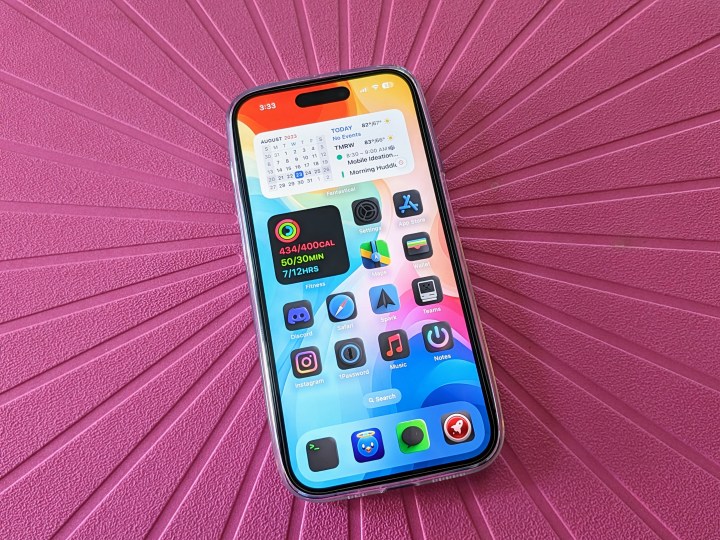
On the more fun side of things, users will be able to convert rough sketches into beautiful drawings with a simple highlight and selection gesture. The Image Playground feature brings text-to-image facility across different places, including Messages.
Also, for users who often run into the need to look up Apple’s product guides online, Siri will save them a browser trip. The virtual assistant has ingested those guides and will offer step-by-step instructions right in the dialog box. Another cool upgrade is Screen Awareness, which lets the AI assistant take a peek at the onscreen content and answer contextual queries.
Apple Intelligence really is a big difference here — but it’s worth remembering that Apple Intelligence isn’t available yet, even on iOS 18. Instead, it will launch with iOS 18.1.
iPhone 16 Pro vs. iPhone 14 Pro: battery and charging
Among the most notable quality-of-life upgrades offered by the iPhone 16 Pro are improved mileage and faster charging. The iPhone 14 Pro could manage 23 hours of video playback, which translated into a single day of charge in the iPhone 14 Pro’s real-life use. The iPhone 16 Pro falls a bit short of that; in testing, it didn’t make it a full day without needing to be topped off. It would burn through 80% of battery life in roughly 10 hours, with only four to four and a half hours of active screen time.
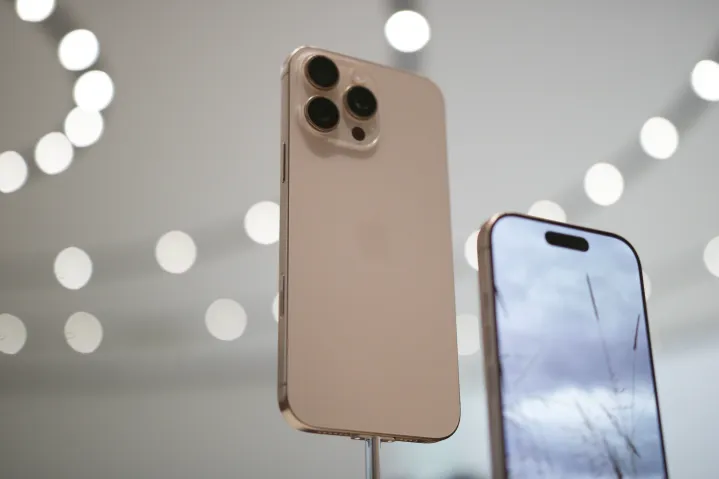
As far as charging goes, the iPhone 16 Pro can hit 50% life in just half an hour. Apple has also boosted the MagSafe output for its latest flagship. The iPhone 16 Pro can reach a MagSafe power delivery peak of 25 watts when paired with a 30W brick, while the iPhone 14 Pro could only muster 15W for juicing up the lithium-ion unit packed inside its glass-metal chassis.
iPhone 16 Pro vs iPhone 14 Pro: availability and price
The Apple iPhone 16 Pro is now available. The base model of the phone will set you back $999, with more storage carrying higher costs and rising all the way to a 1TB option. The Apple iPhone 14 Pro is similar, with the same storage options and an initial starting price of $999.
However, given the latter’s older age, it’s likely you’ll find the iPhone 14 Pro at a much lower price than the newer flagship. During sales periods, it could be significantly so, making it a much more attractive option to those looking for a bargain.
iPhone 16 Pro vs. iPhone 14 Pro: should you upgrade?
The Apple iPhone 16 Pro, as mentioned above, is pushing the envelope with both software- and hardware-side innovations. But that also begs the question — is the iPhone 14 Pro a laggard that demands an upgrade just two years into its product life?

Well, the answer depends on how much utility you are going to get out of the exclusive iPhone 16 Pro perks.
The biggest differentiator, of course, is Apple Intelligence. The AI-driven overhaul of iOS 18 puts Siri and next-gen machine learning capabilities into every corner of the iPhone’s software. And over time, those AI conversations — especially Siri integrations — will appear inside third-party apps, as well. Ultimately, it will boil down to how much one has grown weary of the boring iOS experience and seeks to experience what a next-generation AI-driven experience feels like.
Then we have the camera chops. Now, the iPhone is still one of the nicest smartphone camera systems out there, and that applies to the iPhone 14 Pro as much as the iPhone 16 Pro. Is the newer phone better? Yes. Is it a big enough gulf that you’ll feel like the older phone is missing out? That’s less likely.
However, if you intend to push your phone in terms of ultrawide capture and, more importantly, videos that try to challenge a DSLR, the enhanced zoom and high-fps Dolby Vision perks will really light up a social media feed with stunning samples.

Apple has kept the asking price the same, which is great news and makes the upgrade even more compelling. For those who can score a good trade-in deal and absorb the deficit hit on their wallet, the iPhone 16 Pro is absolutely worth the jump. For the rest, the iPhone 14 Pro is still enough to last at least another year, or two, with ease.
Technology
Google is fixing Wear OS 5, rolling out to Pixel Watches soon
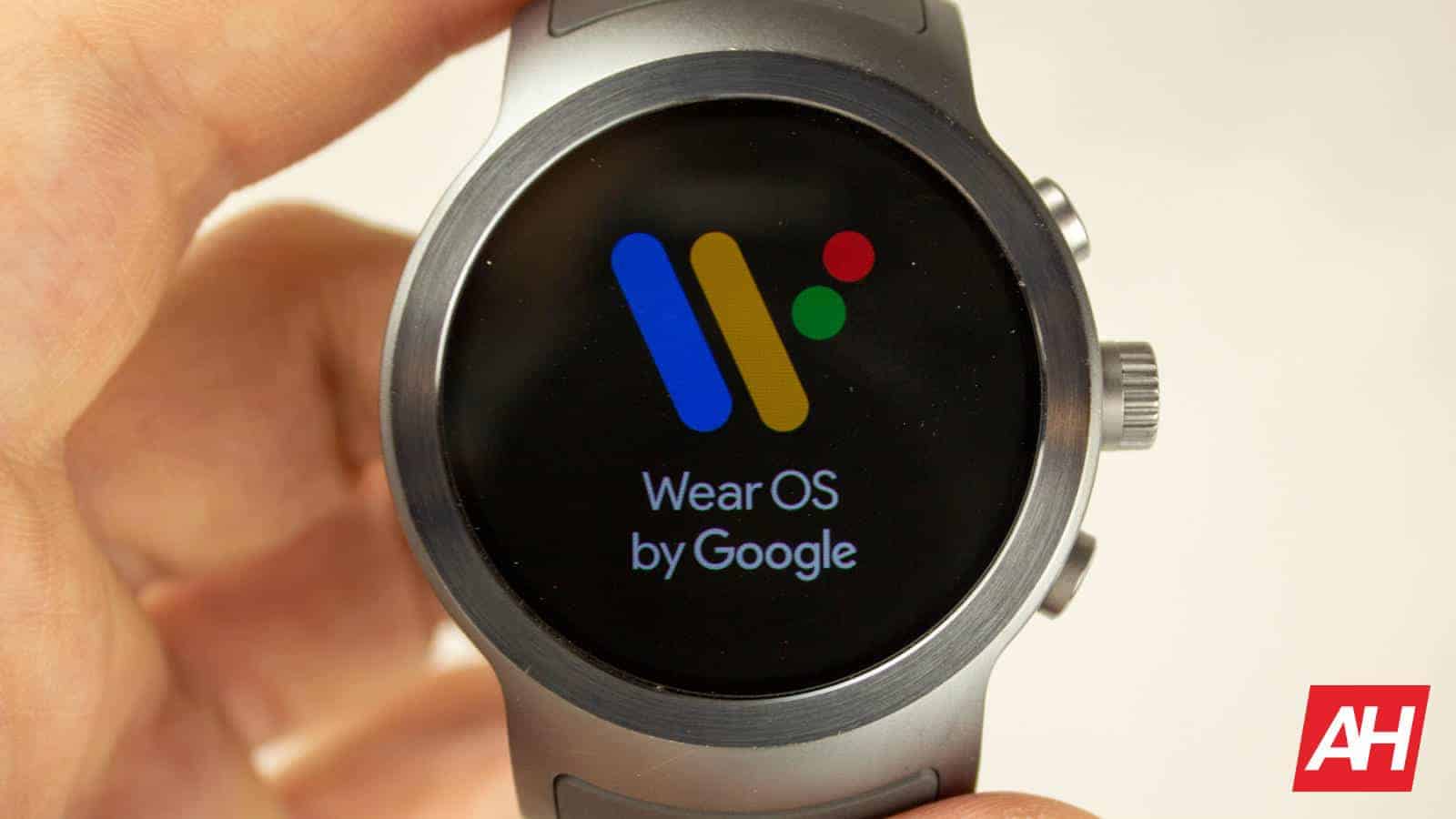
Google rolled out the Wear OS 5 update to the Pixel Watch and Pixel Watch 2 in September. Unfortunately, the search titan had to halt the new update as it was soft-bricking these premium smartwatches. However, Google has now announced that it is aware of the issue with the new Wear OS version. The company is currently fixing the Wear OS 5 update and will soon rollout to the first and second-gen Pixel Watch devices.
Google is aware of the Wear OS 5 issues and will roll it out to Pixel Watches later this year
In a blog post, Google announced that it is aware of an issue affecting some Pixel Watch and Watch 2. The users of these experienced their devices being stuck on a blank screen after updating to the September OTA update. The company’s engineers are still working on fixing the problems with the Wear OS 5. It means a fix for the problems hasn’t been found yet.
However, the Mountain View giant seems to be confident that it will rollout the Wear OS 5 update to the Pixel Watch and Watch 2 later this year. While the company hasn’t provided an exact timeframe for the rollout, we expect it to happen by the end of 2024. In the short blog post, Google confirmed plans to resume the update later this year, “once we’ve mitigated the observed issues”.
Notably, the tech giant also mentioned that it will share any additional updates with the Pixel Watch community as they become available.
Before the fixed update arrives, Google recommends resetting your Pixel Watch
If you upgraded your Pixel Watch to the September update and are experiencing the blank screen issue, then Google recommends a fix. The company said that you will have to reset your Pixel Watch or Pixel Watch 2 to the factory settings. To do this, press the crown on your device for three seconds, then go down and tap the restart option.
There’s also another fix that requires hard resetting your wearable. To do this, long press the crown and side buttons simultaneously for around 35 seconds until the “G” logo appears. Once it happens, your Pixel Watch should restart and you can use it once again after it restarts.
Technology
Former Disco Elysium devs are making the game’s spiritual successor at a new studio

is widely as one of the greatest RPGs of all time, but the future of the series has been up in the air. A planned sequel and expansion were canceled and developer ZA/UM laid off some workers as a result. There’s also been an over ownership of the intellectual property. Still, the essence of the original game is very much alive, not least because a new studio is working on a spiritual successor. The project is slated to continue “the thoughtful, narrative-first approach that defined its predecessor.”
Some developers who worked on Disco Elysium and its scuttled sequel — along with folks who used to work at Bungie, Rockstar Games, Brave at Night and elsewhere — comprise the 12-strong team at London-based Longdue. According to , the studio’s first game is billed as “a psychogeographic RPG” that “explores the delicate interplay between the conscious and subconscious, the seen and unseen. Set in a world where choices ripple between the character’s psyche and environment, players will navigate a constantly shifting landscape, shaped by both internal and external forces.”
If you know anything about Disco Elysium, that should sound fairly familiar. Not many other details have been revealed about the game so far, but Longdue did release a piece of concept art (above).
“At Longdue, we’re inspired by decades of classic RPGs, from Ultiima and Wizardry, through Fallout and Planescape, to the justifiably adored Disco Elysium,” narrative director Grant Roberts, formerly of Bungie and Rocksteady, said in a press release. “We’re excited to continue that legacy with another narrative-first, psychological RPG, where the interplay between inner worlds and external landscapes is the beating heart of the experience.”
Longdue hasn’t revealed all of the former ZA/UM developers that are involved, but Disco Elysium lead designer and writer Robert Kurvitz and lead artist Aleksander Rostov are not among them. In late 2022, ZA/UM’s new majority shareholders fired that pair along with writer Helen Hindpere, accusing them of misconduct and trying to steal intellectual property (among other things). That’s despite Kurvitz writing the novel on which the world of the 2019 game was based. Lawsuits were filed and ZA/UM those were resolved last year. Kurvitz and Rostov have their own company, Red Info.
Technology
NALA founder Ben Gulak on how to navigate the art market downturn with big data and direct connections

Ben Gulak, founder of the Networked Artistic Learning Algorithm (NALA), has seamlessly combined his diverse talents as a computer scientist, entrepreneur and professional painter to transform the art market. With the shift in the art landscape driven by external factors, the visionary shares valuable insights into navigating it by leveraging vast data and democratizing access to art.
Following the recent economic and geopolitical challenges, Ben shares an interesting perspective on the current art market. “The market is experiencing a decline,” he says. No segment is untouched — emerging artists, established names, galleries and even art fairs are all feeling the squeeze. “Almost every artist offers massive discounts to sell. Galleries are admitting sales are down, and fairs have been lackluster, to say the least,” the founder adds.
A large share of industry veterans are quick to say that this downturn was unexpected, but Ben argues many of the signs of fallout have been around for a while. Annual market reports showcased record numbers in the past few years, but concerns were growing at the lower end of the market.
Although the market’s restructuring is devastating for talent and galleries, the industry must become more resilient in the face of evolving challenges. Ben believes this era is an inevitable phase in the market’s cyclical nature, and will eventually birth a newer, more value-driven sector.
Several factors may have contributed to the art market’s restructuring. Ben believes the ultra-high cost of living is the main reason why art has become less important. “If people struggle to keep their homes and cars filled with gas and buy groceries, then there’s simply less disposable money floating around,” Ben says. “Maybe on the high end of the market, people are holding onto their money and waiting on geopolitical issues, but I think most people are just struggling right now, and we have to accept that.”
In the first half of 2024, the art market saw a startling drop in sales. Galleries, artists and collectors have grappled with this setback in different ways. Overall, market inefficiencies have exacerbated and even existed when spending was higher due to low interest rates. The sector’s problems have persisted quietly in the background. “Galleries have dominated the industry, being the gatekeepers, determining who is deemed valuable, who is worth collecting and who can succeed,” Ben says. “The result is that the majority of the global artistic talent pool is kept out of the marketplace, and we are stuck in a quagmire of overpriced, market-manipulated items. With the explosion of the internet, a few big platforms have stepped in to handle online sales. But these cater almost exclusively to galleries, creating a fee structure that’s roughly 30% to the platform, 50% to the gallery, and whatever is left goes to the artists. The buyer, meanwhile, often still has a luxury import duty on the art they purchased.”
As people become more value-conscious, these fees and middlemen become undesirable. Ben believes a buyer’s market where buyers have the ability to go directly to artists and purchase items at a cost they can afford will become the norm.
Ultimately, art is worth what somebody is willing to pay for it. “If you are looking to spend less than $20,000 on a work of art, you should get something you genuinely love and be happy for its artistic value, not because it might go up in value. I understand why some collectors are pulling their work from auctions to avoid seeing their collection value decrease. But that doesn’t mean sales can’t still happen. We are in a buyer’s market right now. Every artist is willing to negotiate, and every artist is hungry to keep doing what they love,” Ben explains.
The art market is poised to recover at some point in the future as the demand for original, quality creations will never completely vanish. Humans inherently require some form of expression and creativity to find fulfillment in life, making art an indivisible part of society’s DNA. Ben echoes these sentiments, “The market lost sight of the importance of merit, allowing the cream to rise to the top, and instead, we got a very messy, bloated industry that needs to right itself. We need to rethink the entire sales process of how art is discovered and acquired. Too many artists were kept on the outskirts, and buyers never had an opportunity to truly select the best items with the old system. We need a leveling of the playing field and allow art lovers to trust their instincts, deal directly with artists and see what happens. As long as we have a business model that caters to the old system, we aren’t looking to the future. Every industry on the planet is going buyer/seller-direct.”
Soon, Ben predicts a shift toward value-driven demand and hopes a meritocratic ecosystem prevails, rewarding true artistic and creative talent while filtering out derivative and copycat artists. Authenticity must be celebrated. After all, art is meant to personify the human experience, make statements about social issues, or simply capture the beauty of life. If talent isn’t encouraged to march to their own drum, the prevalence of generic art will only grow.
After having straddled both the art world as a painter and agent of sorts in the tech world, Ben built NALA [Networked Artistic Learning Algorithm] as a way to broaden the art market and crack it wide open. “I believe that if we can create a marketplace where all artists can participate and buyers have access to see the best of what’s available and deal directly with artists, we have an opportunity to revolutionize the industry,” he says.
NALA works by matching art lovers with artists based on their unique personal preferences. Every time an art lover engages with an image on NALA, it learns their preferences and can find more artwork suited to them. This makes it possible to efficiently connect artists with art lovers and take no commissions. Ben is anticipating a major transformation in the art market within the next five years thanks to NALA’s pioneering technology. “With my NALA, we can create an open marketplace where all buyers have access to stunning pieces that artists are fairly compensated for,” Ben says.
VentureBeat newsroom and editorial staff were not involved in the creation of this content.
Technology
Xbox Cloud Gaming will let you stream your own games in November
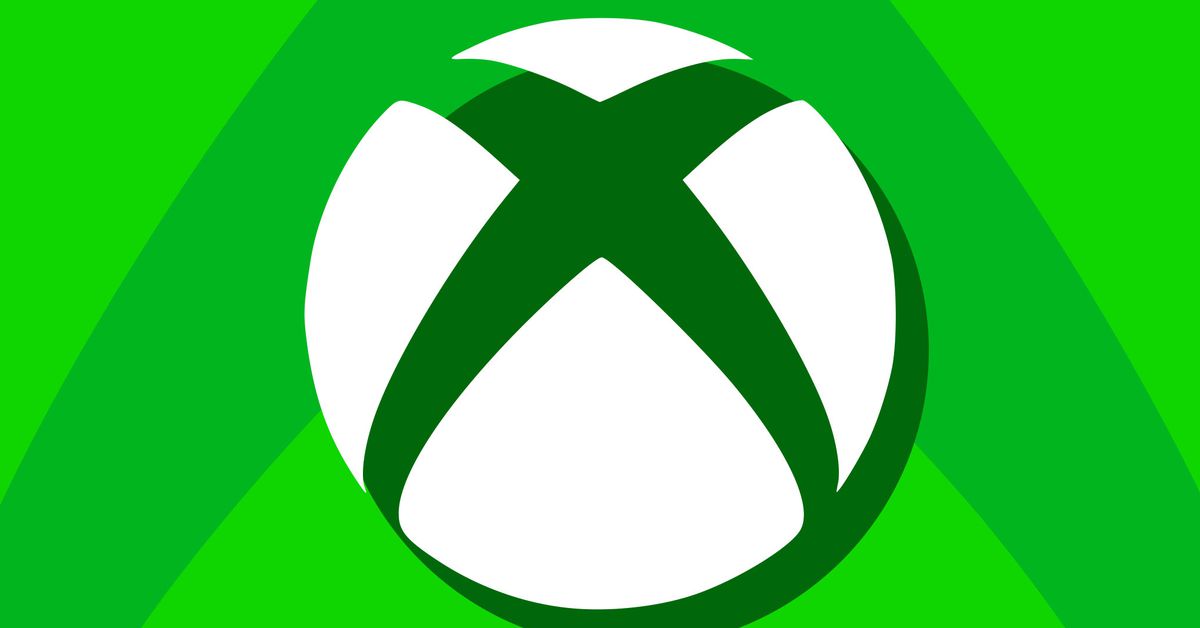
Microsoft is planning to support the streaming of Xbox game libraries next month. Sources familiar with Microsoft’s plans tell The Verge that the company is getting ready to test the ability to stream games that you own that aren’t part of the existing Xbox Game Pass library.
As part of a long-running project known as Project Lapland inside of Microsoft, the software giant has been readying its Xbox Cloud Gaming servers to be able to support streaming thousands of games. I’m told Microsoft will first test its new Xbox Cloud Gaming streaming capabilities with Xbox Insiders in November, before expanding them to more Xbox users and more games.
The Xbox Cloud Gaming expansion comes in the same month Microsoft plans to enable game purchases in its Xbox mobile app for Android in the US. Microsoft is able to do this thanks to a court ruling earlier this week that forces Google to stop requiring Google Play Billing for apps in the Play Store on November 1st.
Xbox president Sarah Bond revealed yesterday that “starting in November, players will be able to play and purchase Xbox games directly from the Xbox App on Android.” Once Microsoft’s work to enable a full game library on Xbox Cloud Gaming is complete, you’ll be able to purchase an Xbox game on Android and immediately stream it to your device.
Project xCloud was supposed to launch with game library streaming in 2020. Microsoft then announced it would support your game library on Xbox Cloud Gaming in 2022, but it never launched that year. I understand the work has been complicated by having to prepare key infrastructure for thousands of games, instead of the hundreds that currently exist on Xbox Game Pass. While thousands of games will soon be available through Xbox Cloud Gaming, I’m told some publishers will hold certain games back due to licensing requirements or deals.
Microsoft is also working on a browser-based Xbox mobile store that it was originally planning to launch in July. The store will initially include deals and in-game items but will grow to cover first-party games eventually. Microsoft said in August that testing had begun on the web-based mobile store and that “work is progressing well and we will have more to share in the future.”
Update, October 11th: Article updated to mention original Project xCloud plans.
Servers computers
9u network cabinet server rack data cabinet

Beautiful appearance, like a robot, hhh🤣
For more information, please contact me.
WhatsApp:86 18830632263
#network #table #china #cabinet #computer #serverrack #commercialrealestate
source
-

 Science & Environment3 weeks ago
Science & Environment3 weeks agoHyperelastic gel is one of the stretchiest materials known to science
-

 Technology3 weeks ago
Technology3 weeks agoWould-be reality TV contestants ‘not looking real’
-

 Science & Environment3 weeks ago
Science & Environment3 weeks agoHow to unsnarl a tangle of threads, according to physics
-

 Science & Environment3 weeks ago
Science & Environment3 weeks ago‘Running of the bulls’ festival crowds move like charged particles
-

 Womens Workouts3 weeks ago
Womens Workouts3 weeks ago3 Day Full Body Women’s Dumbbell Only Workout
-

 Science & Environment3 weeks ago
Science & Environment3 weeks agoMaxwell’s demon charges quantum batteries inside of a quantum computer
-

 Science & Environment3 weeks ago
Science & Environment3 weeks agoLiquid crystals could improve quantum communication devices
-

 Science & Environment3 weeks ago
Science & Environment3 weeks agoQuantum ‘supersolid’ matter stirred using magnets
-

 Science & Environment3 weeks ago
Science & Environment3 weeks agoSunlight-trapping device can generate temperatures over 1000°C
-

 Science & Environment3 weeks ago
Science & Environment3 weeks agoITER: Is the world’s biggest fusion experiment dead after new delay to 2035?
-
News4 weeks ago
the pick of new debut fiction
-

 Science & Environment3 weeks ago
Science & Environment3 weeks agoHow to wrap your mind around the real multiverse
-

 Science & Environment3 weeks ago
Science & Environment3 weeks agoWhy this is a golden age for life to thrive across the universe
-

 Science & Environment3 weeks ago
Science & Environment3 weeks agoNerve fibres in the brain could generate quantum entanglement
-

 News3 weeks ago
News3 weeks agoOur millionaire neighbour blocks us from using public footpath & screams at us in street.. it’s like living in a WARZONE – WordupNews
-

 Science & Environment3 weeks ago
Science & Environment3 weeks agoQuantum forces used to automatically assemble tiny device
-

 Technology2 weeks ago
Technology2 weeks agoIs sharing your smartphone PIN part of a healthy relationship?
-

 Science & Environment2 weeks ago
Science & Environment2 weeks agoX-rays reveal half-billion-year-old insect ancestor
-

 Science & Environment3 weeks ago
Science & Environment3 weeks agoA slight curve helps rocks make the biggest splash
-

 Science & Environment3 weeks ago
Science & Environment3 weeks agoTime travel sci-fi novel is a rip-roaringly good thought experiment
-

 Science & Environment3 weeks ago
Science & Environment3 weeks agoLaser helps turn an electron into a coil of mass and charge
-

 Science & Environment3 weeks ago
Science & Environment3 weeks agoPhysicists are grappling with their own reproducibility crisis
-
Business2 weeks ago
Eurosceptic Andrej Babiš eyes return to power in Czech Republic
-

 Science & Environment3 weeks ago
Science & Environment3 weeks agoNuclear fusion experiment overcomes two key operating hurdles
-

 News4 weeks ago
News4 weeks ago▶️ Hamas in the West Bank: Rising Support and Deadly Attacks You Might Not Know About
-

 News3 weeks ago
News3 weeks agoYou’re a Hypocrite, And So Am I
-

 Sport3 weeks ago
Sport3 weeks agoJoshua vs Dubois: Chris Eubank Jr says ‘AJ’ could beat Tyson Fury and any other heavyweight in the world
-

 Science & Environment4 weeks ago
Science & Environment4 weeks agoCaroline Ellison aims to duck prison sentence for role in FTX collapse
-

 News3 weeks ago
News3 weeks ago▶️ Media Bias: How They Spin Attack on Hezbollah and Ignore the Reality
-

 Science & Environment3 weeks ago
Science & Environment3 weeks agoA new kind of experiment at the Large Hadron Collider could unravel quantum reality
-
Business2 weeks ago
Should London’s tax exiles head for Spain, Italy . . . or Wales?
-

 Technology2 weeks ago
Technology2 weeks ago‘From a toaster to a server’: UK startup promises 5x ‘speed up without changing a line of code’ as it plans to take on Nvidia, AMD in the generative AI battlefield
-

 Football2 weeks ago
Football2 weeks agoFootball Focus: Martin Keown on Liverpool’s Alisson Becker
-

 Science & Environment3 weeks ago
Science & Environment3 weeks agoRethinking space and time could let us do away with dark matter
-

 News4 weeks ago
News4 weeks agoNew investigation ordered into ‘doorstep murder’ of Alistair Wilson
-
News3 weeks ago
The Project Censored Newsletter – May 2024
-

 Technology2 weeks ago
Technology2 weeks agoQuantum computers may work better when they ignore causality
-

 MMA2 weeks ago
MMA2 weeks agoConor McGregor challenges ‘woeful’ Belal Muhammad, tells Ilia Topuria it’s ‘on sight’
-

 Sport2 weeks ago
Sport2 weeks agoWatch UFC star deliver ‘one of the most brutal knockouts ever’ that left opponent laid spark out on the canvas
-

 News3 weeks ago
News3 weeks agoIsrael strikes Lebanese targets as Hizbollah chief warns of ‘red lines’ crossed
-

 Science & Environment3 weeks ago
Science & Environment3 weeks agoA tale of two mysteries: ghostly neutrinos and the proton decay puzzle
-

 Science & Environment3 weeks ago
Science & Environment3 weeks agoFuture of fusion: How the UK’s JET reactor paved the way for ITER
-

 Technology2 weeks ago
Technology2 weeks agoGet ready for Meta Connect
-
Business2 weeks ago
Ukraine faces its darkest hour
-

 Health & fitness3 weeks ago
Health & fitness3 weeks agoThe secret to a six pack – and how to keep your washboard abs in 2022
-

 Technology4 weeks ago
Technology4 weeks agoThe ‘superfood’ taking over fields in northern India
-

 Science & Environment3 weeks ago
Science & Environment3 weeks agoUK spurns European invitation to join ITER nuclear fusion project
-

 Science & Environment3 weeks ago
Science & Environment3 weeks agoWhy we need to invoke philosophy to judge bizarre concepts in science
-

 News3 weeks ago
News3 weeks agoWhy Is Everyone Excited About These Smart Insoles?
-

 Health & fitness2 weeks ago
Health & fitness2 weeks agoThe 7 lifestyle habits you can stop now for a slimmer face by next week
-

 CryptoCurrency3 weeks ago
CryptoCurrency3 weeks agoCardano founder to meet Argentina president Javier Milei
-
Politics3 weeks ago
UK consumer confidence falls sharply amid fears of ‘painful’ budget | Economics
-

 MMA3 weeks ago
MMA3 weeks agoRankings Show: Is Umar Nurmagomedov a lock to become UFC champion?
-

 Science & Environment3 weeks ago
Science & Environment3 weeks agoMeet the world's first female male model | 7.30
-

 News3 weeks ago
News3 weeks agoFour dead & 18 injured in horror mass shooting with victims ‘caught in crossfire’ as cops hunt multiple gunmen
-

 Womens Workouts3 weeks ago
Womens Workouts3 weeks ago3 Day Full Body Toning Workout for Women
-

 Technology3 weeks ago
Technology3 weeks agoRobo-tuna reveals how foldable fins help the speedy fish manoeuvre
-

 Science & Environment3 weeks ago
Science & Environment3 weeks agoPhysicists have worked out how to melt any material
-

 Health & fitness3 weeks ago
Health & fitness3 weeks agoThe maps that could hold the secret to curing cancer
-

 Science & Environment3 weeks ago
Science & Environment3 weeks agoBeing in two places at once could make a quantum battery charge faster
-

 News4 weeks ago
News4 weeks agoHow FedEx CEO Raj Subramaniam Is Adapting to a Post-Pandemic Economy
-

 CryptoCurrency3 weeks ago
CryptoCurrency3 weeks agoDecentraland X account hacked, phishing scam targets MANA airdrop
-

 CryptoCurrency3 weeks ago
CryptoCurrency3 weeks agoLow users, sex predators kill Korean metaverses, 3AC sues Terra: Asia Express
-

 Womens Workouts3 weeks ago
Womens Workouts3 weeks agoBest Exercises if You Want to Build a Great Physique
-

 Womens Workouts3 weeks ago
Womens Workouts3 weeks agoEverything a Beginner Needs to Know About Squatting
-

 TV3 weeks ago
TV3 weeks agoCNN TÜRK – 🔴 Canlı Yayın ᴴᴰ – Canlı TV izle
-

 Science & Environment3 weeks ago
Science & Environment3 weeks agoCNN TÜRK – 🔴 Canlı Yayın ᴴᴰ – Canlı TV izle
-

 Servers computers2 weeks ago
Servers computers2 weeks agoWhat are the benefits of Blade servers compared to rack servers?
-

 Technology2 weeks ago
Technology2 weeks agoThe best robot vacuum cleaners of 2024
-

 News3 weeks ago
News3 weeks agoChurch same-sex split affecting bishop appointments
-

 Politics3 weeks ago
Politics3 weeks agoTrump says he will meet with Indian Prime Minister Narendra Modi next week
-

 Sport3 weeks ago
Sport3 weeks agoUFC Edmonton fight card revealed, including Brandon Moreno vs. Amir Albazi headliner
-

 CryptoCurrency3 weeks ago
CryptoCurrency3 weeks agoEthereum is a 'contrarian bet' into 2025, says Bitwise exec
-

 Science & Environment3 weeks ago
Science & Environment3 weeks agoHow one theory ties together everything we know about the universe
-
Business4 weeks ago
JPMorgan in talks to take over Apple credit card from Goldman Sachs
-

 Science & Environment3 weeks ago
Science & Environment3 weeks agoQuantum time travel: The experiment to ‘send a particle into the past’
-

 Science & Environment3 weeks ago
Science & Environment3 weeks agoTiny magnet could help measure gravity on the quantum scale
-

 Science & Environment3 weeks ago
Science & Environment3 weeks agoMost accurate clock ever can tick for 40 billion years without error
-

 CryptoCurrency3 weeks ago
CryptoCurrency3 weeks agoBitcoin miners steamrolled after electricity thefts, exchange ‘closure’ scam: Asia Express
-

 CryptoCurrency3 weeks ago
CryptoCurrency3 weeks agoDorsey’s ‘marketplace of algorithms’ could fix social media… so why hasn’t it?
-

 CryptoCurrency3 weeks ago
CryptoCurrency3 weeks agoDZ Bank partners with Boerse Stuttgart for crypto trading
-

 CryptoCurrency3 weeks ago
CryptoCurrency3 weeks agoBitcoin bulls target $64K BTC price hurdle as US stocks eye new record
-

 CryptoCurrency3 weeks ago
CryptoCurrency3 weeks agoBlockdaemon mulls 2026 IPO: Report
-
Business3 weeks ago
Thames Water seeks extension on debt terms to avoid renationalisation
-
Politics3 weeks ago
‘Appalling’ rows over Sue Gray must stop, senior ministers say | Sue Gray
-

 CryptoCurrency3 weeks ago
CryptoCurrency3 weeks agoCoinbase’s cbBTC surges to third-largest wrapped BTC token in just one week
-

 News2 weeks ago
News2 weeks agoUS Newspapers Diluting Democratic Discourse with Political Bias
-

 Technology2 weeks ago
Technology2 weeks agoMicrophone made of atom-thick graphene could be used in smartphones
-

 Technology3 weeks ago
Technology3 weeks agoiPhone 15 Pro Max Camera Review: Depth and Reach
-

 News3 weeks ago
News3 weeks agoBrian Tyree Henry on voicing young Megatron, his love for villain roles
-

 Science & Environment3 weeks ago
Science & Environment3 weeks agoHow do you recycle a nuclear fusion reactor? We’re about to find out
-

 CryptoCurrency3 weeks ago
CryptoCurrency3 weeks agoRedStone integrates first oracle price feeds on TON blockchain
-

 CryptoCurrency3 weeks ago
CryptoCurrency3 weeks ago‘No matter how bad it gets, there’s a lot going on with NFTs’: 24 Hours of Art, NFT Creator
-
Business3 weeks ago
How Labour donor’s largesse tarnished government’s squeaky clean image
-

 News3 weeks ago
News3 weeks agoBrian Tyree Henry on voicing young Megatron, his love for villain roles
-

 Travel3 weeks ago
Travel3 weeks agoDelta signs codeshare agreement with SAS
-

 Politics2 weeks ago
Politics2 weeks agoHope, finally? Keir Starmer’s first conference in power – podcast | News
-

 Technology2 weeks ago
Technology2 weeks agoUniversity examiners fail to spot ChatGPT answers in real-world test
-

 CryptoCurrency3 weeks ago
CryptoCurrency3 weeks agoLouisiana takes first crypto payment over Bitcoin Lightning
-

 CryptoCurrency3 weeks ago
CryptoCurrency3 weeks agoCrypto scammers orchestrate massive hack on X but barely made $8K

You must be logged in to post a comment Login